If you are the Chief Information Security Officer at your company, the task of establishing a security strategy and ensuring data assets are protected at all times is a complex and constantly changing responsibility. From compliance and understanding risk management to creating policies, processes, and systems to help reduce threats and protect data, the role of the CISO is incredibly important.
With so much to be responsible for, it can be hard to always find the time to learn about emerging cybersecurity threats that CISOs like yourself need to prepare for in the near future. It seems that year after year, cybercriminals are getting smarter, changing their tactics, and increasing the sheer number of attempted cyberattacks to see what sticks. After all, it only takes one successful infiltration, and a cybercriminal or criminal organization could hold the entire digital infrastructure of a company hostage for a quick and lucrative payout.
2023 is no different than previous years in that, as a CISO, you should be prepared for an increased number of attacks and new types of threats. Here are some of the top priorities that Chief Information Security Officers like you are preparing for as we head into 2023.
1. Increasing Number of Ransomware Attacks
Ransomware is continuing to rise as more cybercriminals are exposing vulnerabilities in companies and getting fast and easy payouts. These cybercriminals are no longer the lone hackers of the past, instead more ransomware attacks are being implemented by sophisticated criminal organizations that can sometimes of the backing of state actors and terrorist organizations.
It is estimated that the US Healthcare System lost approximately $21 billion to ransomware attacks in 2020, and in 2021, US organizations lost over $159.4 billion in downtime from being offline due to a ransomware attack.
Also, the average ransom demand in 2021 was around $5.8 million with the average payment being around $7.9 million. As we wait for 2022 data to come in, industry experts all agree that we should see even higher figures.
With staggering financial statistics like these, you can understand why one of the top priorities of CISOs in 2023 is protecting their organizations from the increasing number of ransomware attacks.
2. Cloud Migration
Cloud migration is happening across all industries, and when it comes to cybersecurity, moving cybersecurity applications and processes to cloud-based services has many benefits. Not only does cloud migration reduce costs, but it can also be scalable to adjust instantly to increased or decreased demand.
Also, when it comes to cybersecurity, cloud providers ensure that they implement and maintain the strictest security and the most sophisticated digital and physical safeguards.
Cloud service providers have some of the most secure data centers in the world and they can afford to hire the best cybersecurity experts in the industry. Security along with all of the added benefits of cloud migration is why companies who have not completed their cloud migrations as of yet, are prioritizing it for 2023.
Related article: How to Choose the Right Cloud Service Provider.
3. API Security
API security breaches are increasing rapidly and are expected to continue increasing well into 2023. As organizations develop and implement APIs, they must create strict authentication and authorization processes and analyze all API traffic. Additionally, before any API security tools can be deployed, an overall API strategy needs to be developed along with a full analysis of how many and which APIs and users are accessing which systems.
Related article: Best Practices for Preventing API Attacks.
4. Multifactor Authentication
If your company is not utilizing a multifactor authentication protocol to authenticate users before they can access systems and data, you are behind the curve and need to make it a priority for 2023. There are several types of authentication factors including factors that are knowledge, possession, heritage, place, or time-based.
5. Recruiting Cybersecurity Analysts and IT Personnel
If your company is finding it difficult to fill positions in cybersecurity and IT, you are not alone. It is estimated that as of April 2022, there are more than 700,000 unfilled cybersecurity positions in the US, and by 2025, that number is to skyrocket to more than 3.5 million worldwide.
Many companies are taking the following steps in addition to increasing salaries, benefits, and IT budgets to help fill open cybersecurity and IT positions.
- Lower niche skill requirements: Instead of requiring specific skills for specific roles, look for more IT generalists who are a little knowledgeable on everything rather than only an expert at one thing.
- Look for skills beyond formal education: There is more to cybersecurity professionals than just a degree. They should also have skills in creative problem-solving, communication, leadership, critical thinking, and other liberal arts qualities. A company should feel free to look at candidates with all different types of skills and educational backgrounds.
- Make sure your job descriptions are accurate: Tell a person exactly what you will be hiring them for and what their expected compensation should be. Do not waste time by being too general and not providing enough information.
These are just a few of the tactics that CISOs are taking when it comes to finding and hiring the next generation of cybersecurity talent needed to keep up with the increasing demands and stresses of maintaining a secure system in the digital age.
Learn more about AWA’s certified vCISO services.
6. Conducting Crisis Response Simulations
It is an excellent practice to run crisis response simulations with all different departments and personnel within a company. These simulations can help employees understand actions that need to be taken during and after a data breach, ransomware, or cyber-attack. It can also help to identify flaws in the systems as well as gaps in communication.
These are only six priorities that CISOs are focusing on as we near the end of 2022 and the beginning of 2023. There are still hundreds of other considerations that need to be made as well as organizations trying to keep up with changes and the rising occurrence of breach attempts and cyber-attacks. By prioritizing where you can make the largest impact as a CISO, you can help to reduce your company’s digital exposure.




